A day in the life of paratriathletes Claire Cashmore and Dave Ellis
What exactly does it take to train for paratriathlon? Keen to find out, we joined pro paratriathletes, and couple IRL, Claire Cashmore and Dave Ellis for a behind-the-scenes look at an average day’s training…

Heaven on a plate for professional athletes, Loughborough University boasts some of the world’s top training facilities and is the proud home of British Triathlon.
From the blue depths of the vast Olympic pool, to one of the country’s largest strength and conditioning gyms, it’s no wonder that this quiet market town is where decorated Paralympians Claire Cashmore and Dave Ellis have chosen to put down roots.
With the racing season well underway, we joined the couple to get an idea of what a full day of training as elite paratriathletes looks like.
We got to know the close-knit paratri squad and witnessed the immense volume of training (and food) the athletes put away on a daily basis.
Claire and Dave are both passionate ambassadors for para sport and are all about increasing exposure and awareness. Born without a left forearm, Claire became a paraswimmer at an early age and started collecting her eight Paralympic medals at just 16.
Since transitioning across to paratriathlon only five years ago, Claire’s powered her way to the top of the sport in the PTS5 class. Rarely far from the top of the podium, Claire has achieved some of the highest accolades in the sport, including two world titles, European gold and Paralympic bronze.
Dave became classifiable as visually impaired in 2006 after starting to lose his vision aged 16. He now has less than 10% vision and races with guide Luke Pollard in the PTVI class.
Also from a swimming background, Dave’s been racing paratri for over nine years, during which he’s won European, world and national titles four times.
This season, he’s got a new target in his sights, the Commonwealth Games. Claire and Dave have been together for over 15 years, having met back in 2006 at Dave’s first international paraswimming event. Fast forward to today and they travel the world training and racing together. But enough of the chat, let’s get training…
7:30am: Let’s dive in…
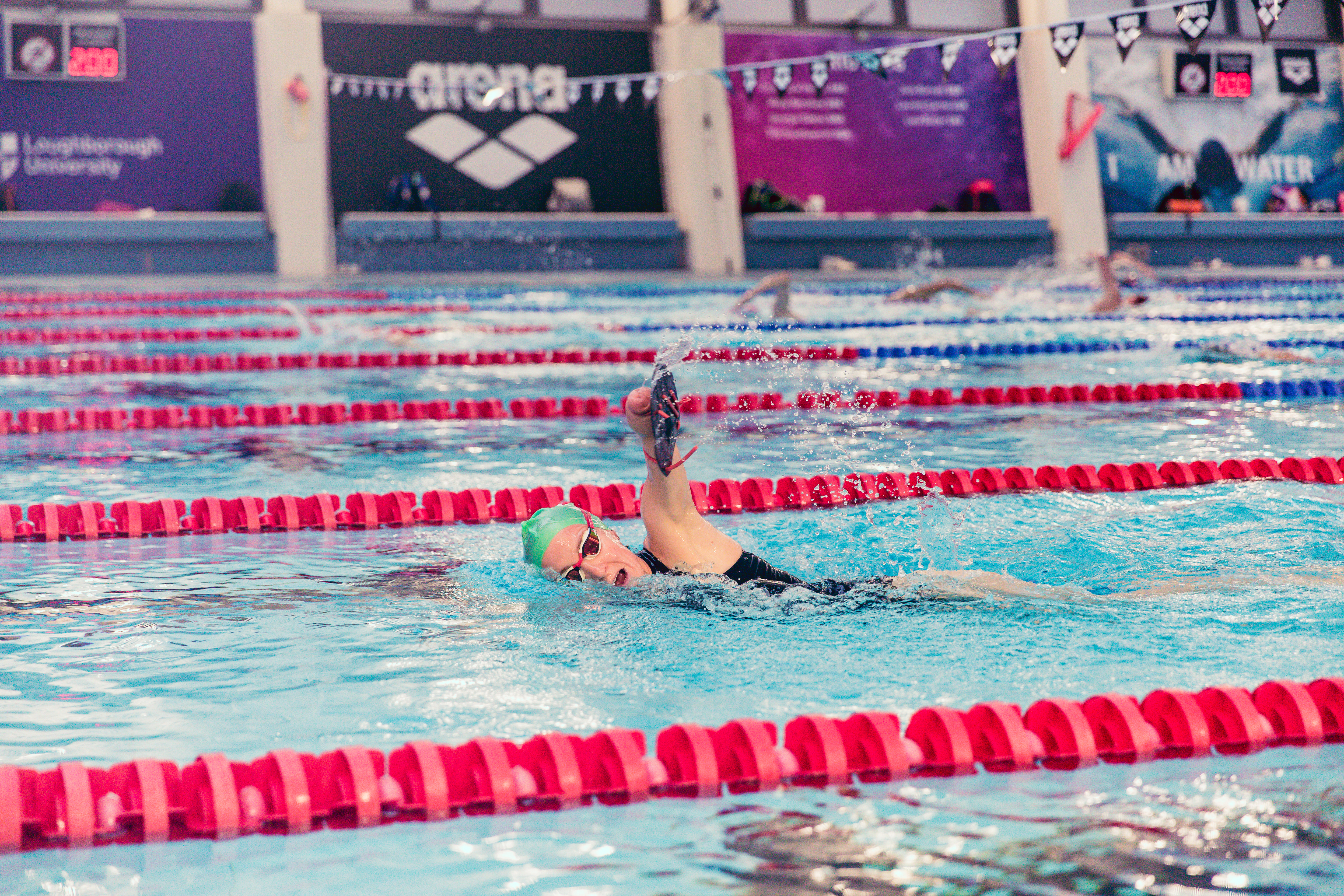
Splashes from the elite Olympic-distance athletes at the far side of the pool merge with the chatter of the close-knit paratri squad. They do all of their weekly swims together, with six of the squad who aren’t away at races in attendance for this morning’s 90-minute swim.
Today it’s a tough session, where we build up to some hard VO2 max efforts for the main block. I say ‘we’ because today Claire and Dave have agreed to let us tag along during a typical day’s training sessions. I thank my lucky stars that the 25m divider’s up today, and hope I can vaguely keep up for the 1km warm-up.
Under the billowing 15m banner of a serious-looking George Peasgood, I jump in the lane with Claire and the very same fiery-haired double Paralympic champion for 20mins of hell, which they’d describe as limbering up.
After a couple of easy 300m swims, we ease into some builds and max efforts designed to create lactic and fatigue ahead of the main set. I’m relieved afterwards to find that I wasn’t the only one feeling it: “The session was 4.5km today, with 1,500m of VO2 max as well at 400m effort pace, so that’s pretty tough,” admits Dave. “It felt hard.”
The metrics that matter
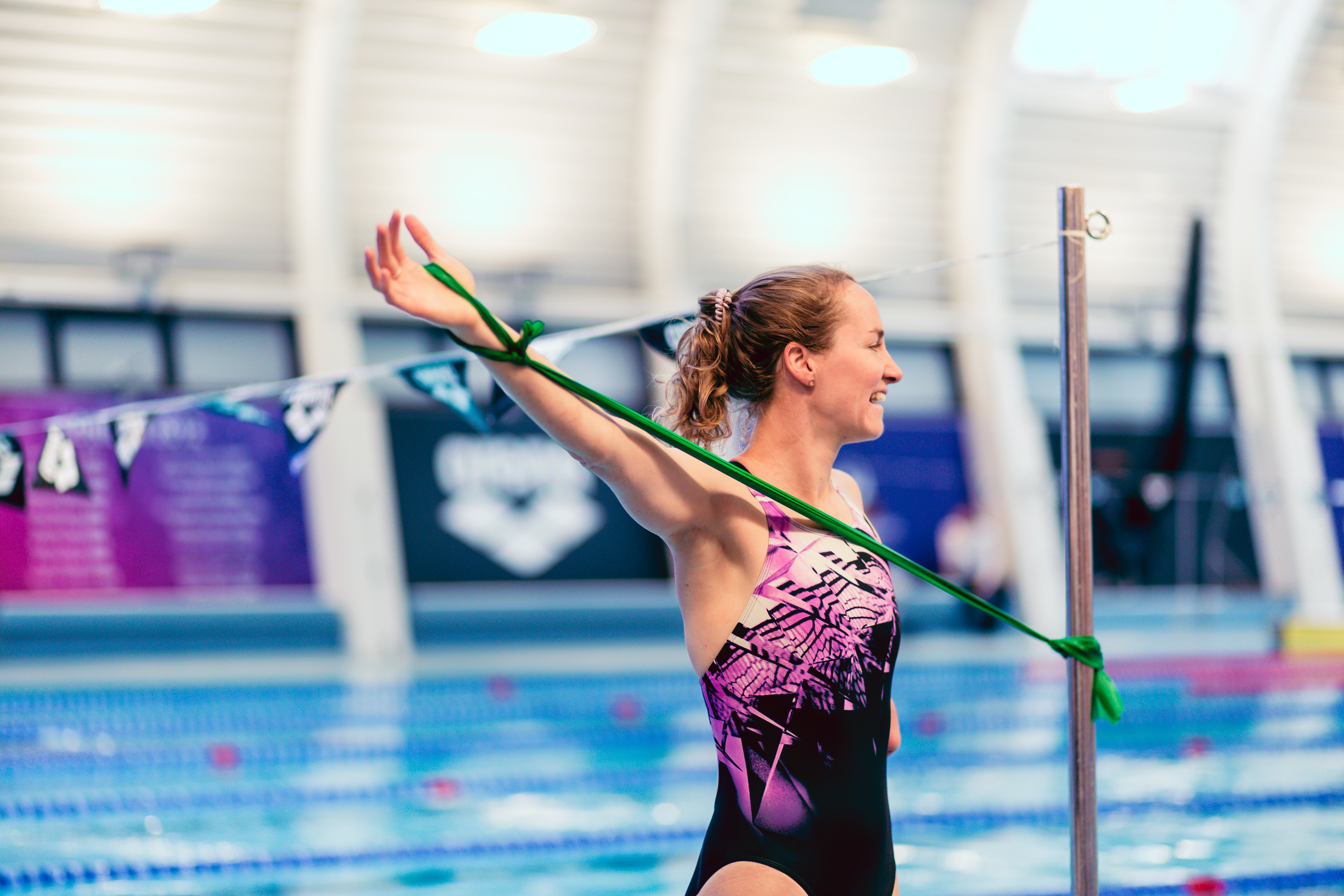
Both Claire and Dave laud power as the first metric they train to, especially on the bike. Then it’s a question of taking a look at heart rate and perceived effort to gain a more rounded understanding of form.
“Coming from a swimming background where you have absolutely nothing, a lot of the time you’ve got to be really in tune with how you’re doing,” explains Claire. “Sometimes it’s good to step away because you can get a bit obsessive about looking at your watch all the time. It’s important to be able to rely on all the different forms of metrics and be adaptable.”
That’s not to say that the world champion doesn’t appreciate the data. Claire’s been using an Incus Nova tracking device since the runup to Tokyo. The Incus device provides feedback on rotation and efficiency, which is something Claire’s been working on to help transition from pool to open water.
Swimming together
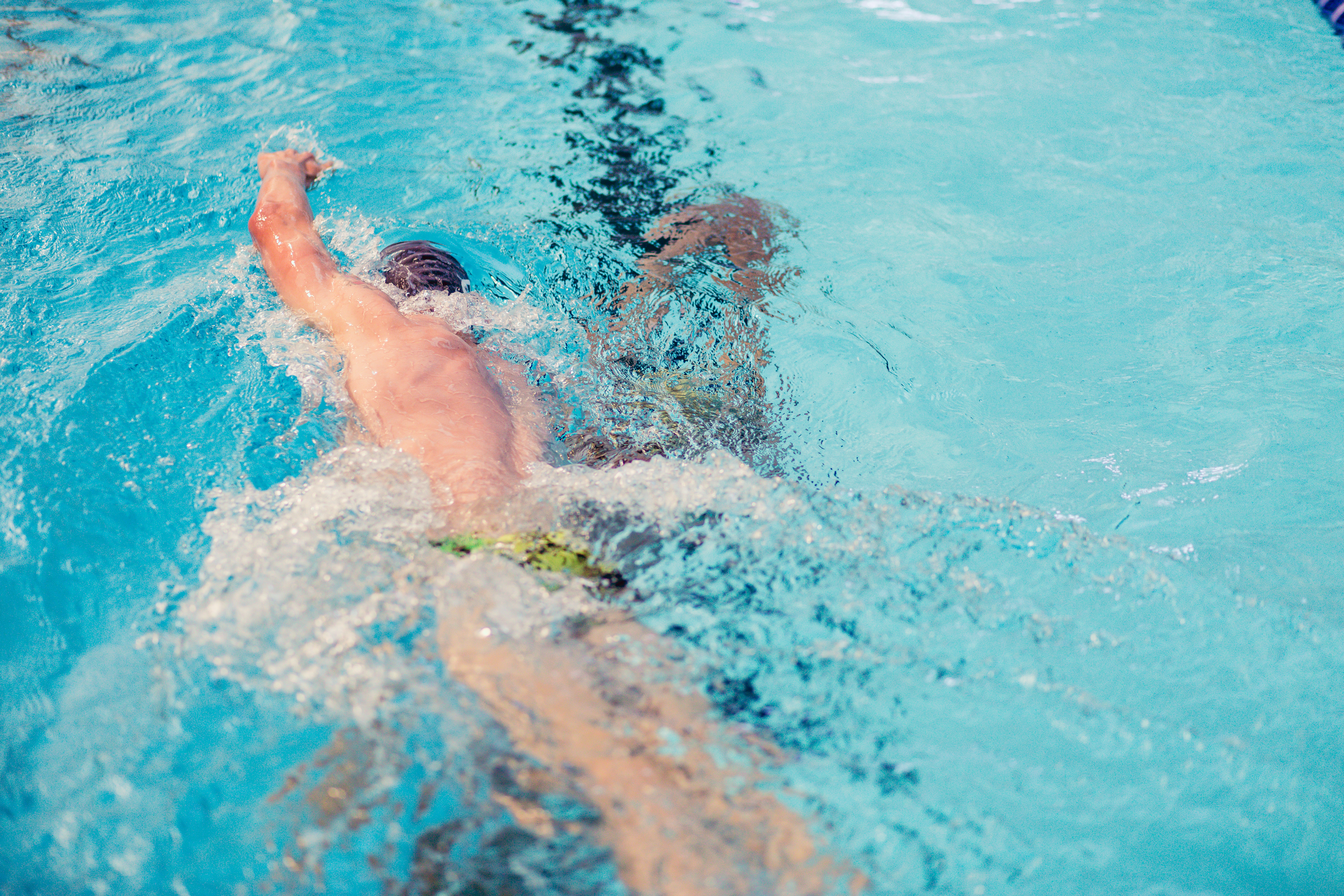
Out on the open water, Dave has to rely completely on Luke for directions. “There’ll be a slap round the shoulder or head at the right time so I don’t turn too early round a buoy,” Dave jokes.
During the 750m swim leg of a paratri race, PTVI athletes have to swim tethered around the ankle to their guide. Translate this to training in the pool, though, and there’s a few snags to consider.
As the boys slip on a mangled-looking elastic yellow shoelace that doubles up as their makeshift tether, Dave explains the complicated dance that goes on underwater: “You use the tether to feel where the other person is.
“For the turn, if you’re only swimming one way, you’ve then got to go back over so the tether doesn’t get caught on your legs. I go underneath Luke after the tumble turn because he runs out of air quicker than me. It just takes a bit of practice really.”
9:30am: Hitting the gym

Straight from the pool to the colossal Powerbase Gym just round the corner, the group warms up with some foam rolling and mobility before dispersing.
The pair have an hour to follow individualised programmes focused on building bone density and keeping them healthy and strong. “The gym session is about robustness,” Claire later explains. “It’s more than prehab because we are lifting weights.
But it’s very much focused on calves and just trying to be as robust through the lower body as possible to be able to prepare for the load that you’re going to take, particularly in the run and the bike.”
But they didn’t always train this way. Dave explains that previously they’d be in the gym every other day. “For example, when I was only swimming I’d squat over 100kg, whereas now it’s 60kg but focusing on technical aspects of the actual squat. It’s just being robust – like pure strength and power.”
1:00pm: Time to tandem
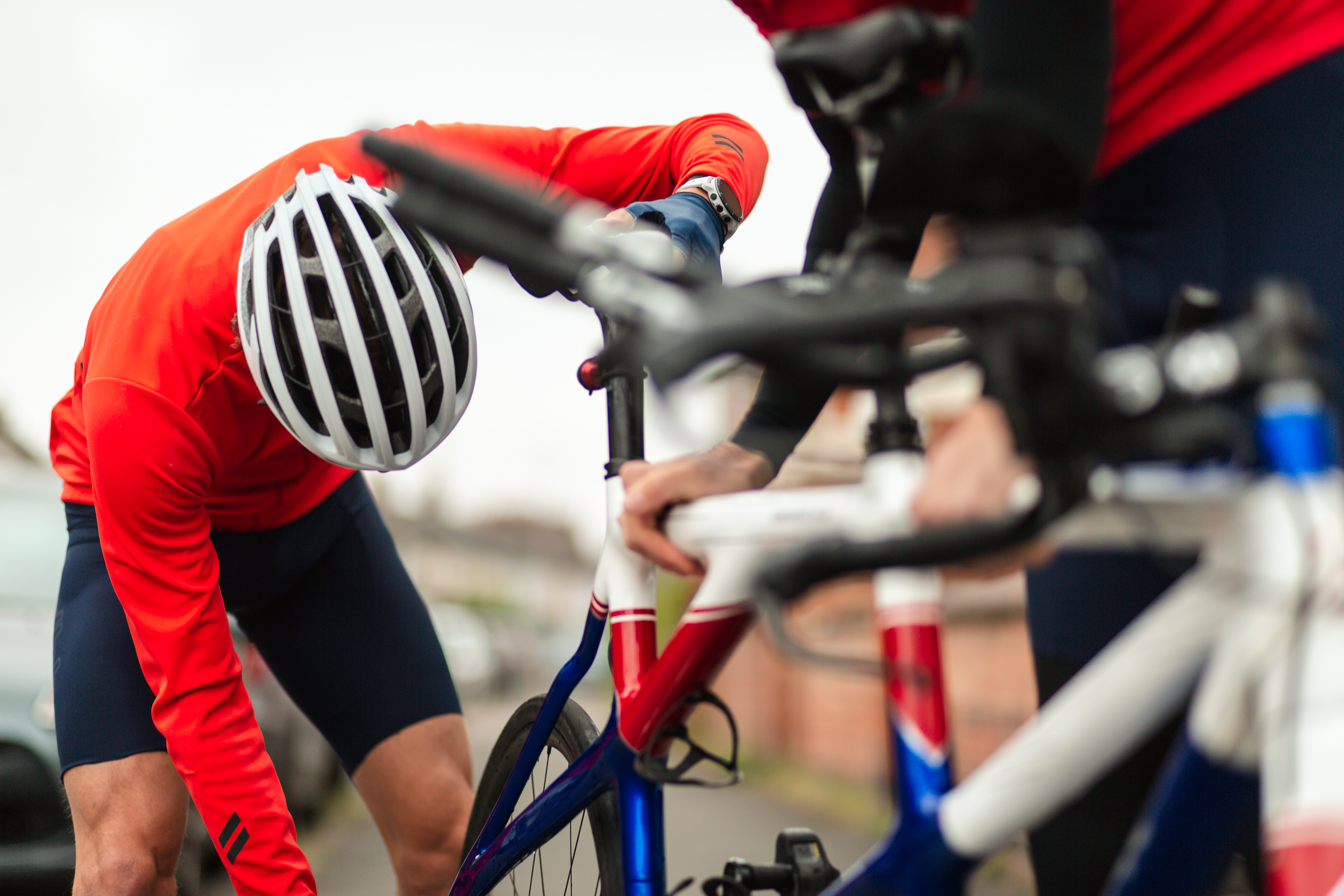
If you’re local to the Loughborough area, you might be lucky enough to spot Dave’s sleek, patriotic-looking tandem which the boys take for a spin almost daily.
After a quick bite to eat, the two rendez-vous at Dave and Claire’s new house on the town’s outskirts for an easy 90min ride. Other bike sessions in the week are at varying intensities.
“On Saturday we did 3 x 25mins at threshold. Last Thursday was 5 x 8mins at race effort and then we had to run off the bike with a 5 x 3min, which was quite tough,” admits Dave.
1:30pm: Modifying the bike

After a top-secret hour in the lab on the static bike, a sweaty Claire emerges ready for a very gentle hour ride with me along some rolling Leicestershire lanes.
Having wrestled with the impracticalities of a prosthetic at the start of her paratri career, not to mention the embarrassing “farting noises” that came with it, Claire ditched the cumbersome kit for a 3D printed, custom-made cup which attaches to the top of her TT bike, creating a comfortable perch for her stump as she rides.
But it wasn’t an easy journey. “Probably one of the hardest things I’ve dealt with in paratriathlon is that there’s nothing out there. There’s no information.
“Yes, everyone has different disabilities, and you need to find what works for you, but if there was a bit more information out there, I’d have thought maybe I’ll see if that works for me, rather than getting a prosthetic. Prosthetics did not work at all for me.”
3:30pm : Track those efforts
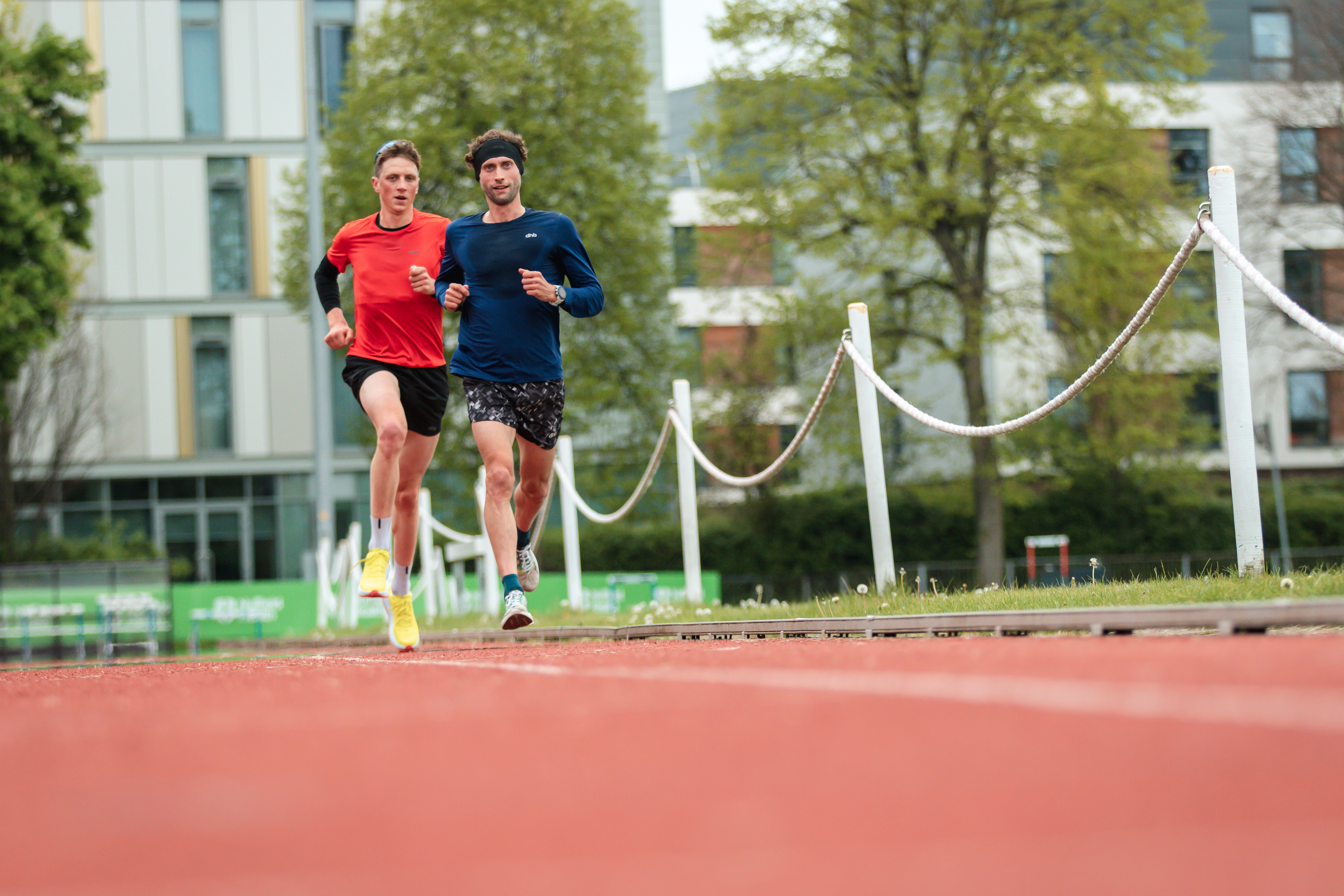
While Claire’s still building back up to running post-knee niggle, Dave and Luke hit the track solo for their last session of the day.
We meet on the orange rubber of Loughborough University’s Paula Radcliffe Athletics Track for one of Dave’s many weekly run sessions.
A typical training week will see the boys log anything from 85km to 100km on their feet, that’s running almost every day with a mixture of easy and hard sessions.
This seemingly huge volume works well for Dave, though he explains that “running easy seems to develop more the lower-end threshold which has then made the upper-end threshold a bit easier as well”.
Today’s set is around six kilometres at a 5km pace, “maybe a little bit slower because I’m still building back into track,” Dave interjects.
After having broken both arms back in January when tripping over an errant dog lead, Dave’s had to slowly build back his strength and fitness.
“Normally it’d be some longer reps, then a combination of 400m and 300m efforts. We jump in with the Olympic-distance guys sometimes and just do their session, which is pretty similar.
“It’s a mile at 10km pace, then 300m reps at 5km pace, and then back to another mile. It’s a mixture of paces but pretty constant, even the recovery will be a 200m flow to the next rep, so we’re never really stopping. We keep moving for the whole half hour that you’re on the track. It’s quite tough but it’s manageable, just about.”
Top image credit: Ben Lumley/220 Triathlon




